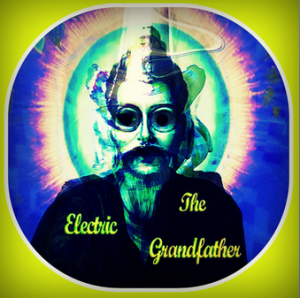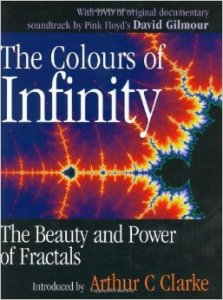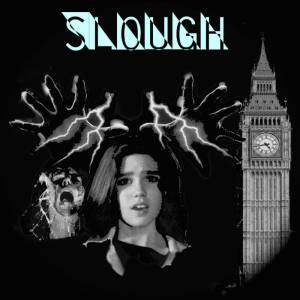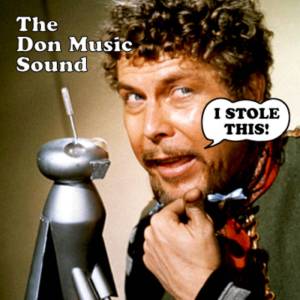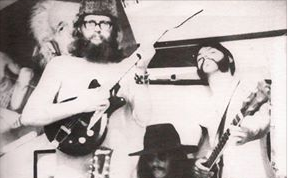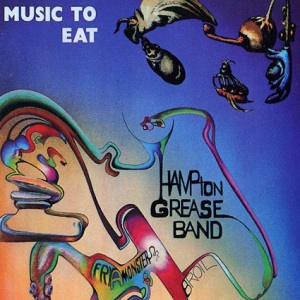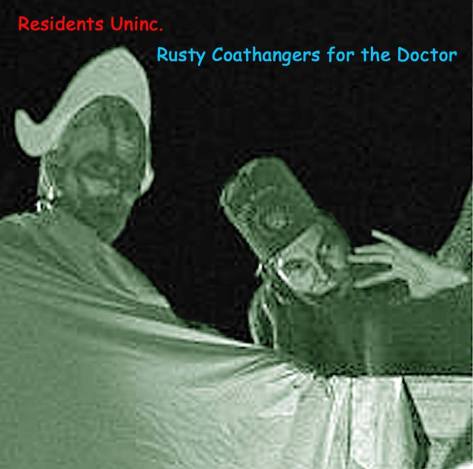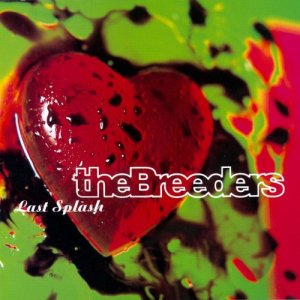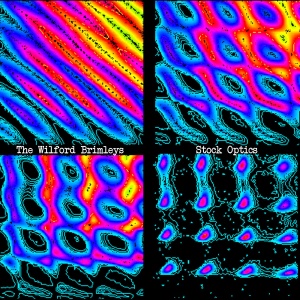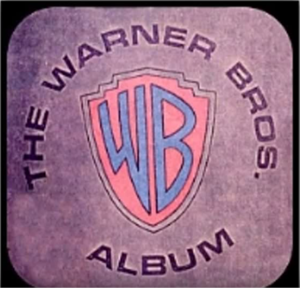
Here’s another review of a Residents demo tape. This time, it is not an actual review. It is an analysis of the band’s most anarchic-sounding psychedelic work, The Warner Bros. Album. The picture above was the cover of the actual tape box. Allow me to explain its partial history.
From late 1970-mid 1971, the band that became the Residents recorded an album of 40 songs, all of them on a reel-to-reel tape, made with a very low budget and with crude instruments, and sent it to Warner Bros. Records in hopes of getting a recording contract with the label. The band sent it to that label because the label’s A&R manager, Hal Haverstadt, helped signed Captain Beefheart, who was a major influence for the project, to the label. When listening to the tape, Mr. Haverstadt was horrified, and probably psychologically-scarred, when he heard the music, and wondered what was the reason behind it. So, Hal rejected it, and since there was no name given on the return address, he sent it simply to “The Residents”. The photo below is the actual back cover of the original tape.
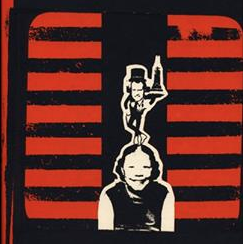
Let me try to give a theoretical history of this mighty weird album.
In 1969, Captain Beefheart & the Magic Band released what was their most critically-acclaimed work, Trout Mask Replica. The album was considered to be one of the weirdest albums in rock music history. A year later, the Residents just finished recording a demo tape of desolate experimental psychedelic rock called Ballad of Stuffed Trigger. When the Residents bought a copy of Trout Mask Replica and listened to it for the first time, the band really liked the music, and thought that they could do the same. The band were recently discovered by Philip Lithman, a British musician who later became known as Snakefinger, as well as the Bavarian avant-garde composer N. Senada, whose existence is widely disputed. In fact, N. Senada was rumored at one point to be Captain Beefheart (real name Don Van Vliet) because the same house that Trout Mask Replica was recorded in was located on “Ensenada Drive” in Woodland Hills, California. When 1969 ended, Flower Power and the hippie generation were still becoming popular even as the 1960’s ended. Charles Bobuck, a member of the Residents, did gave out on the Residents website the history of “Moonman”, a pre-Residents track recorded on the day of the moon landing in July 1969. He said that at that time, the band liked to go to Psilocybin Beach and take psychedelic mushrooms, run around naked and then completely losing their minds. So, I think that this could mean that drug use played a role in the making of The Warner Bros. Album. When Snakefinger joined forces with the Residents, he took a violin with him, and the band began to make music. N. Senada also helped the Residents in their music at this point, too.
When the band tried to record something for Warner Bros. Records, I think stuff such as William S. Burroughs, Looney Tunes cartoons, Richard Nixon, The Beatles, guerilla art and grindhouse films all played a key role in the making of this tape. The Residents were a bunch of hyper-hippies at this point, and maybe the recording studio that the tape was made in was a living room that was covered in a bunch of psychedelic posters and strange junk. I also read on Discogs that the artwork, perhaps the back cover art, was done by N. Senada himself. The instruments used for the album included detuned acoustic guitar, violin (played by Snakefinger), drums, various percussion instruments, harmonica, low-watt electric guitar, distorted electric bass, kazoo, saxophone, barroom piano, upright bass, and tape effects (I’ll explain them later). According to The Cryptic Guide to the Residents, “strange liner notes” were designed for the inside of the tape box, and I guess the liner notes were a stream-of-conscious rant that was literally typed.
If Warner Bros. Records considered releasing The Warner Bros. Album, they would probably market it to stores under the label’s own categories, such as “Free-Form Comedy Noise”, “Sub-Surface Infiltration”, “Hillbilly Dada”, “Velvet Waste”, or “Discombobulated Country”.
I also have two theories about the album’s artwork:
- The back cover of the tape shows guerilla-style artwork with figures that are (1) a schoolgirl who was one of the Residents’ friends when they were very young, and (2) Richard Nixon’s head on Mr. Peanut’s body, who is holding a plate with what appears to be a skyscraper. I’m thinking that this was a political statement, talking about Richard Nixon’s policies during the Vietnam War.
- The inside artwork, which could be for the gatefold, consists of what I think could’ve been either: (1) Looney Tunes cartoon characters looking completely stoned, (2) various doodles of weird things, or (3) a group photo of the Residents during the recording of the album.
Let me give an analysis of some of the tracks heard on The Warner Bros. Album. However, I’m not going to describe all of them, since that would be a big waste of time.
“The Mad Sawmill of Copenhagen, Germany” is a piece full of droning electric guitar, ukulele, jazzy drums, electric bass, harmonica and piano. The way the electric guitar was played sounds like it was fed through a broken fuzzbox, making it sound like an out-of-tune Indian instrument.
“Baby Skeletons & Dogs” features rather cartoonish lyrics, which describes things such as “an American dream” and a “washing machine”. I think the song was referencing America in the 1950’s.
“Stuffed Genital” is a short instrumental that consists of a recording of metal percussion and a cheap horn, and then the recording was gradually sped-up.
The track “A Merican Fag” has a little kid singing along with the Residents to this song. It sounds a bit creepy if the lyrics are any indication! Maybe the little kid is Lana Flynn, the daughter of Homer Flynn, one of the founders of the Cryptic Corporation, the Residents’ business management.
“Going to Arcata Blues” references Arcata, a city in Northern California that is located in Humboldt County. This track has a sound collage consisting of random hippies in the studio shouting random slogans typical of the Counterculture. You can also hear a couple of women’s voices, which could perhaps be girlfriends of a couple members of the band. At the same time of the recording of this track, Snakefinger and N. Senada appeared on a college radio station in Arcata, where they were performing a composition composed by N. Senada himself for saxophone and violin. This live broadcast was officially released on the Residents’ 1991 rarities compilation Daydream B-Liver, which was released on CD by Residents fan club label UWEB (Uncle Willie’s Eyeball Buddies).
“Black Velvet Original” can be best described as a hillbilly tape speed experiment, featuring violin, acoustic guitar, and percussion. Note that when the violin is sped-up, it sounds like a fiddle.
“Christmas Morning Foto” was an instrumental that was a free jazz piece featuring out-of-tune saxophone, acoustic and electric guitar, and percussion. This also experimented with tape speed effects because a majority of this piece, particularly the guitars and percussion, sound a bit warped.
“Snot & Feces Live at the Grunt Festival” is an instrumental consisting of a recording of acoustic guitar and drums. This time, the tape was gradually slowed down to achieve a desolate effect.
“Oh Yeah Upp Bop Shu Bop” is a free-form mix of country noise and doo-wop that sounds like an extreme attempt at impersonating both Dion & the Belmonts and the Legendary Stardust Cowboy all at the same time. The way the instruments were played sounds like the tape was warped and distorted a little, and had new vocals overdubbed on top. The lead vocals sound like a teenage hippie, and the background vocals sound like characters from The Simpsons.
The lead vocal on “Ohm is Where the Art Is” sounds strangely like Paul McCartney. A rumor was told thousands of times, particularly in Australia, that the Residents were in fact the Beatles!
“Concerto in R Flat Minor II” has a faint spoken word segment that is partially unintelligible. Some of the stuff I hear in the monologue include “Minnesota”, “special impact”, and “defective”. I posted the song to a Facebook group I made called “The Pre-Sidents: The Residents Before 1974”, and a person named Gary Childs commented:
“It sounds like he’s reading a product warranty. He’s saying the product will be replaced if it is defective.
This sounds like an example of “found object art”. He is reading the warranty label from some product. It’s like a boiler plate legal statement written by a lawyer from some corporation.”
Similarly, the album Music to Eat by the Hampton Grease Band, also from 1971, had lyrics read from encyclopedia pages and a can of spray paint.
Good ears, Gary! I’m very proud of you!
“Love Theme from a Major Motion Picture” is perhaps the only piece on the album to be more “commercial”, because it is a majestic piano tune. Since the album was rejected by Warner Bros., it counts as a failed attempt at a film score.
“Prelude for Accordion, Sousaphone, and French Horn”, a piece made for those three instruments, sounds like a mix of Louisiana carnival music, Captain Beefheart, and cheap parade music.
“Short Circuit Comes to Town I” is a 7-second snippet of noise that always intrigued me as if what was used to make the strange noises heard in it. I posted the whole snippet to a Facebook group I joined called “WIERD INSTRUMENT TRIBE”, and I was told in the comments:
“Off the top of my head, sounds like metallic friction (like a brake disc) taped at 7.5 ips and played back at 15–or something like that.”
“It sounds like an overdriven electric guitar picked way up near the pickups”
“Cymbal, tom and a guitar played between saddle and bridge plus the recording is played back faster and its distorted like hell.”
“Short Circuit Comes to Town II” is a 6-second snippet of noise that sounds similar to the first, but this time it sounds like the Residents played a duel between a slide guitar played Hawaiian style and an electric guitar that sounds like it was played on the 5th and 6th strings, muted and distorted. This recording was gradually sped-up with a violin and jazz drums overdubbed on top of it.
There’s also a short untitled track near the end of the album which consists of distorted electric guitar, percussion, violin, and tribal chanting. I think this was the Residents trying to channel Frank Zappa’s 1966 track “The Return of the Son of Monster Magnet”, but only by under 30 seconds.
And finally, the intro to the noise track “Psychedelic and Orgasmic Finale I” has a strange grating noise. I posted the song to the same “WEIRD INSTRUMENT TRIBE” Facebook group and asked what was used to create that sound, and a person commented:
“Sounds like they’re bowing a violin’s strings with a rusty warped hand cranked wheel.”
The rest of the track consists of grating violin, drums, sloppy electric bass, out-of-tune penny whistle, and a bunch of free-form guitar noise that sounds like the guitar player turned up the volume of the amplifier all the way up, complete with the drive setting, and just made out-of-tune noise and mechanical feedback. An extreme attempt at trying to overcome the Velvet Underground!
In the “The Pre-Sidents: The Residents Before 1974”, Facebook group, my Facebook friend William Reinhardt commented on my Warner Bros. Album-related post:
“BTW, my ‘falling out’ with the Residents was over selling ‘WBA’ & ‘Baby Sex’ Reel-to-Reel dubs from the masters in the original silk screened tape box boxes (as shown above) a special gift to me for radio play on my KBOO show.\ I was in a desperate period for cash and is something I have regretted ever since! (Whoever is in possession of these one of a kind tapes has the rarest of collectibles). Their early Sycamore St. studio was simply a mixer and a 2 track and 4 track 1/4 inch recorders, as i recall.”
Mr. Reinhardt was a radio DJ who worked at KBOO FM in Portland, Oregon. He was one of the guys who helped the Residents become popular. He even broadcasted the entire Warner Bros. Album on radio in 1977!
That’s pretty much my analysis of The Warner Bros. Album.
